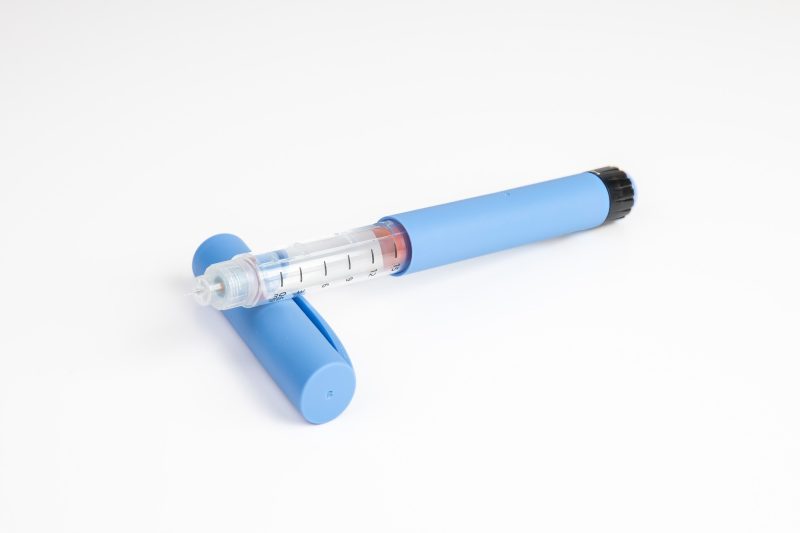Regulating iron overload: Liraglutide’s potential benefits

Study reveals liraglutide’s potential to regulate iron metabolism and improve glucose tolerance in a mouse model of hereditary hemochromatosis and obesity.
Study: Liraglutide Impacts Iron Homeostasis in a Murine Model of Hereditary Hemochromatosis. Image Credit: Peter Togel / Shutterstock.com
A recent Endocrinology study assesses the role of liraglutide in regulating iron metabolism in a mouse model of hereditary hemochromatosis, diet-induced obesity, and glucose intolerance.
Treatment options for hereditary hemochromatosis
Hepcidin, which is encoded by the Hamp gene, regulates the absorption of iron from the intestines, recycling by macrophages, and release of stored iron from hepatocytes. The protein HFE regulates hepcidin production through its interactions with other proteins like transferrin receptor 1 (TfR1) and TfR2, which sense when iron levels are high within the blood. Loss-of-function mutations of the HFE gene lead to an autosomal recessive iron-overload disorder referred to as hereditary hemochromatosis (HH).
Excessive hepatic iron accumulation is observed in HH patients, which increases their risk of developing liver disease and fatal organ damage, as well as type 2 diabetes (T2D), obesity, and insulin resistance. Standard treatments for HH include serial therapeutic phlebotomy, which lowers the stores of tissue and plasma iron.
Liraglutide, a glucagon-like peptide-1 agonist (GLP-1A), is used for the management of T2D and obesity, with recent studies suggesting its beneficial effects on obesity-related liver pathology, which could involve aberrations in iron metabolism. In one previously phlebotomy-dependent HH patient with T2D, the use of liraglutide helped maintain normal ferritin levels and reduced glycated hemoglobin levels without phlebotomy.
About the study
The current study hypothesized that liraglutide could reduce body weight, enhance glucose tolerance, and alter iron metabolism in Hfe knockout (KO) mice. To this end, wild-type (WT) and HFE KO mice were fed a high-fat diet to induce obesity, followed by dosing with either saline or liraglutide for 18 weeks. At week 14, an intraperitoneal glucose tolerance test was conducted.
At three time points, mice underwent a body composition analysis to measure lean and fat mass. Complete blood cell counts, total iron-binding capacity (TIBC), serum iron, and ferritin saturation levels were also measured.
Study findings
Liraglutide successfully reduced fat mass, body weight, and lean mass in both HFE KO and WT mice. Glucose tolerance in both groups was also improved with liraglutide administration, thus suggesting that the drug’s function is not directly influenced by higher iron levels. These observations also highlight the successful treatment potential of liraglutide for obesity-related metabolic disease.
As compared to WT mice, circulating iron levels were higher in HFE KO and saline-treated mice. Although liraglutide treatment did not restore serum iron levels to normal levels, it significantly lowered serum iron levels in HFE KO mice.
Furthermore, as compared to WT mice, HFE KO mice exhibited lower TIBC, whereas both groups exhibited lower TIBC following liraglutide treatment. HFE KO mice had higher ferritin saturation, which remained unchanged by liraglutide, thus demonstrating that liraglutide improving iron overload.
Liraglutide treatment also reduced hematocrit, hemoglobin, and red blood cell counts in both WT and HFE KO mice, although not below the lower bound of the normal range in mice. Reticulocyte, platelet, and mean corpuscular hemoglobin (MCH) concentrations were unaffected by genotype or drug treatment. Liraglutide slightly raised lymphocytes and decreased monocytes in HFE KO mice.
The Hamp gene was not differentially expressed in the liver tissue after liraglutide treatment or between genotypes. These results suggest a hepcidin-independent mechanism through which liraglutide treatment reduces hepatic iron levels.
Liraglutide treatment reduced liver weight, irrespective of the genotype, as well as hepatic lipid levels by decreasing Scd1 transcription, which corresponds to the decrease in total liver iron stores. Across the two subgroups, fatty acid synthase (FASN) and peroxisome proliferator-activated receptor alpha (PPARα) were not differentially expressed, thereby indicating that liver weight and steatosis are effectively mitigated by liraglutide treatment in HFE KO and WT mice.
Conclusions
The study findings demonstrate that liraglutide treatment can modify iron metabolism in HFE KO mice while also alleviating obesity-related metabolic disease. HH leads to excessive iron accumulation in the liver, which increases the risk of developing liver cancer and other metabolic syndromes; therefore, GLP1As like liraglutide may be an effective treatment option for these patients.
GLP1As could be used to reduce iron overload in addition to reducing body weight and improving glucose regulation in HH patients.”
Journal reference:
- Bozadjiva-Kramer, N., Shin, J. H., Blok, N. B., et al. (2024) Liraglutide Impacts Iron Homeostasis in a Murine Model of Hereditary Hemochromatosis. Endocrinology 165(9). doi:10.1210/endocr/bqae090








